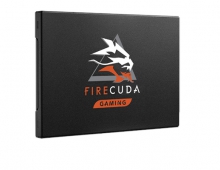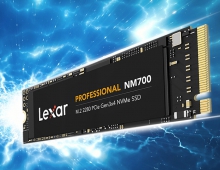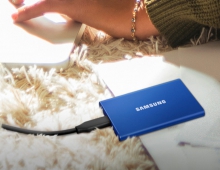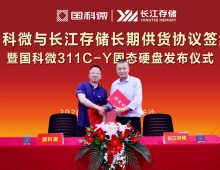
LSI Demonstrated New SandForce Controller
At Flash Memory Summit, LSI speakers demonstrated the company 's latest SandForce flash controller technologies as well as the capabilities of the next-generation SandForce SSD controllers.
LSI demonstrations included LSI SHIELD technology, an error-correction method designed to deliver SSD endurance and data integrity, even while using less expensive flash memory that typically has higher error rates. SHIELD technology is an implementation of low-density parity-check (LDPC) code and digital signal processing (DSP) that will be available in next-generation SandForce flash controllers.
LSI SHIELD technology offers advantages over existing LDPC implementations by combining several features:
- Adaptive code rate: dynamically balances performance and reliability over the life of the SSD
- Smart handling of transient noise: reduces overall LDPC latency for improved ECC efficiency
- Multi-level ECC schema: judiciously applies stronger levels of ECC to minimize latency while maintaining optimal flash performance
The SHIELD technology demo showcased the error-correction advantages of SHIELD technology versus existing LDPC and Bose-Chaudhuri-Hocquenghem (BCH) code methods through a comparison of the three technologies based on various raw bit-error rates (RBER) from the flash.
LSI also showcased DuraWrite Virtual Capacity (DVC), a SandForce flash controller feature that extends the available storage capacity for typical data beyond the physical capacity of the underlying flash memory. By increasing storage capacity for the same physical flash memory, DVC helps to reduce the cost per gigabyte of delivered capacity to the user. With typical database applications, LSI internal testing has shown that DVC can be used to more than triple the capacity for storing user data. The DVC feature will be demonstrated showing various applications of the technology.
The existing LSI SandForce SF-2000 flash controllers also now support Toshiba's second generation 19 nanometer (nm) NAND flash memory (A19nm), enabling SSD manufacturers to produce more affordable SSD products.
LSI SHIELD technology offers advantages over existing LDPC implementations by combining several features:
- Adaptive code rate: dynamically balances performance and reliability over the life of the SSD
- Smart handling of transient noise: reduces overall LDPC latency for improved ECC efficiency
- Multi-level ECC schema: judiciously applies stronger levels of ECC to minimize latency while maintaining optimal flash performance
The SHIELD technology demo showcased the error-correction advantages of SHIELD technology versus existing LDPC and Bose-Chaudhuri-Hocquenghem (BCH) code methods through a comparison of the three technologies based on various raw bit-error rates (RBER) from the flash.
LSI also showcased DuraWrite Virtual Capacity (DVC), a SandForce flash controller feature that extends the available storage capacity for typical data beyond the physical capacity of the underlying flash memory. By increasing storage capacity for the same physical flash memory, DVC helps to reduce the cost per gigabyte of delivered capacity to the user. With typical database applications, LSI internal testing has shown that DVC can be used to more than triple the capacity for storing user data. The DVC feature will be demonstrated showing various applications of the technology.
The existing LSI SandForce SF-2000 flash controllers also now support Toshiba's second generation 19 nanometer (nm) NAND flash memory (A19nm), enabling SSD manufacturers to produce more affordable SSD products.





















